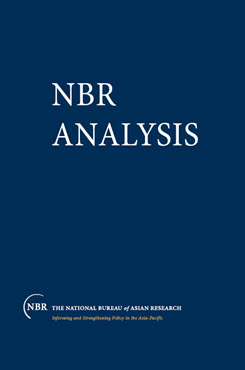NBR Analysis vol. 12, no. 5
Japan and the Engagement of China
Challenges for U.S. Policy Coordination
Relations among the United States, Japan, and China are the key to the balance of power in East Asia. Since the disappearance of the Soviet threat, no substitute has been found to provide a stable basis for the triangular relationship in the post-Cold War environment.
Relations among the United States, Japan, and China are the key to the balance of power in East Asia. Since the disappearance of the Soviet threat, no substitute has been found to provide a stable basis for the triangular relationship in the post-Cold War environment. With rapid expansion of its economy, modernization of its defense capabilities, and the resolve to arrest Taiwan’s drift toward independence, China is the “change agent” in the Sino-Japanese-U.S. triangle at the outset of the twenty-first century. The United States and Japan seek to engage China in a broad, long-range policy framework that will draw emergent Chinese power into a stable regional order, but each country brings very different policy tools and perspectives to this endeavor. The challenge for U.S. policy will be to coordinate its engagement of China with that of Japan. This will require a clear understanding of the dynamics of Sino-Japanese relations and sensitivity to the reality that the U.S. relationship with one will inevitably impact its relationship with the other. In the years immediately ahead, Washington’s ability to manage relations with these two powerful, proud, yet vulnerable, great powers will require a clear sense of priorities. The content of U.S. active engagement with Japan and China should focus on three broad tasks: 1) collaborating with each to encourage the peaceful resolution of the Taiwan issue and peaceful coexistence on the Korean Peninsula; 2) shouldering a share of the costs of “common goods” in the Asian region commensurate with U.S. interest in reminding Tokyo and Beijing of their stake in close ties with the United States; 3) and addressing the new challenges of nuclear and missile proliferation and terrorism.


